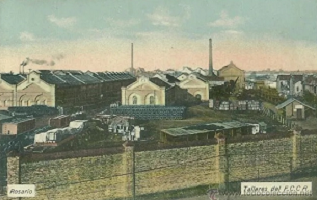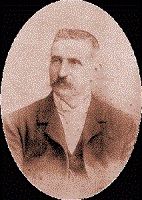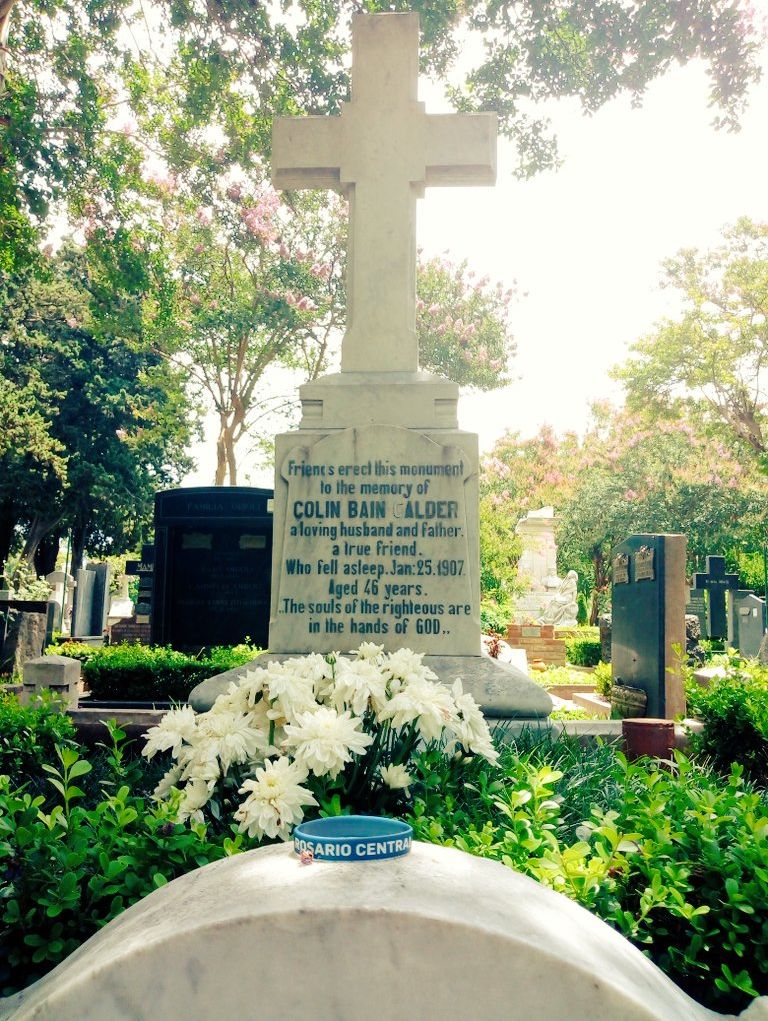Colin Bain Calder

The oldest football-only club in Argentina is not in Buenos Aires. It is in Rosario, the country's second city and that of Messi. The team is Rosario Central, and it was first known as Tallares, after the "workshops" of the Central Argentine Railway, where it founders in the main worked. Its first star, its first Kempes, himself a Central player, was 1897 Miguel, Michael Green, Scots-born of Irish parents. He and his brother, Danilo, would both be first-team regulars but it would be their brother-in-law, who would start their ball rolling.
Michael and Daniel's elder sister, Mary, also born in Scotland in Addiewell by West Calder had in Argentina met and married in 1890 another new arrival from the home-country, from Dingwall in Easter Ross. In fact in 1895 the Calder and the Greens were neighbours. A horse-drawn carriage-painter to trade in his home town Colin Bain Calder had in about 1889 been recruited to work in and then run the iron-horse paint shop in the fast-growing, inland town on the Parana, the River Plate. Born in 1860 and after the early death of his carpenter father, who is buried in St. Clement's churchyard in Dingwall's town centre, Bain Calder was brought up in the poorhouse, at the end of the High St. probably where the Royal Hotel now stands. And any acquaintance he had with football must have been ad hoc. The organised game did not reach his home-town until 1888, just as he was on his way. Yet he was clearly bitten by the bug. He arrived in Rosario to find a cricket club already in existence since 1867 and in 1886, with the railway connection to the capital completed, the first inter-city football game having been played. But it had been to rugby rules, football being confined again to ad hoc amongst railways workers in the railway yard with an old wagon used as changing rooms and as a view-point for any spectators.


However, the lack of more organised football almost certainly then prompted those same railway workers to meet in October 1889 to discuss forming a sports club. A new name, the Central Argentine Railway Athletic Club, was suggested to replace "Workshops". There was also intense discussion as to whether it should concentrate on football or include cricket. The decision was for football only. And the October meeting was followed by a further one on Christmas Eve that same year formally to found said club. A committee was elected. The secretary was Mr. Chamberlain, the vice-president was Geordie, Thomas Hooper. The President, who had attended the October meeting and, perhaps as a man from outwith the Central Belt, like several of the founders of Queen’s Park, with little interest in cricket, spoken out strongly in favour of football-only, was paint-shop manager, Bain Calder. And he, after whom a street is named in his fully adopted city and where his and Mary's descendants still live, would remain in position until 1900, seven years before his early death in 1907 and burial in Rosario's Non-Conformist Cemetery.
Birth Locator: Dingwall, Easter Ross
Residence Locator(s): High St. Poor House, Dingwall, Easter Ross
Grave Locator: Cemetario dos Dissidentes,
Ground Locator: Rosario Central
Other Sources:
Miguel H. Green (on Twitter in Spanish)
Back to the Highland and Moray Trail or the SFHGHome page
